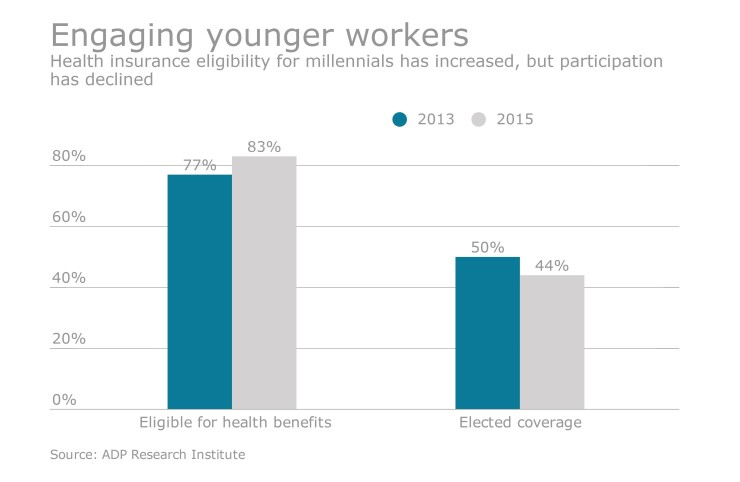Employers say employees don’t have a high level of understanding about their employee benefits, yet many don’t or won’t engage with benefit communications. Employers and advisers should work to simplify communications and tailor information to interested audiences, experts say.
When the International Foundation of Employee Benefits Plans (IFEBP) surveyed 341 of its members in 2016, only 19% of respondents believed their employees have a high level of understanding about their benefits. Eighty-five percent said their biggest challenge is that plan participants don’t open or read the materials sent to them. And although 65% of respondents identified benefits communication as a high priority, nearly half said their participants don’t understand the materials they are mailed. Nearly a third said their participants don’t perceive value in their benefits.

The solution for many employers will be to simplify their messaging, diversify their approach demographically, and generally realize that a one-size-fits-all approach is not getting it done, says IFEBP Director of Research Julie Stich.
“It’s always more challenging instead of using the language that your lawyer gave you to explain something, or your summary plan report,” Stich says. “It’s harder to make your communication pieces more interesting, visually appealing, and easier to understand, but that’s how you’re going to get people to understand them.”
“Communicating by life stage” has been another successful strategy for 81% of survey respondents, particularly as half of them employ multiple generations of workers, Stich says. A generationally varied approach includes personalizing plan materials for the spouses and dependents of participants as well as the employees themselves.
“In some instances, it’s the spouse who’s more interested in how the benefits work than the actual employee,” she explains. “Reaching out to all the family members can make it easier.”
Angela Berg, North America communication practice co-leader at Mercer of Seattle, says organizations should consider what it means when employees report that they don’t understand plan information. However necessary from a legal perspective, the overly saturated plan content “paralyzes clients to take action because they’re overwhelmed by the level of detail and the volume of communication,” she says.
“A lot of organizations are doing an annual calendar to make sure they’re not overwhelming their employees [with mailings],” Berg adds. “Employees don’t think about benefits every day. They may think about it once a month.”
Decreasing the frequency of communication is as necessary a component of a successful communication strategy as intelligent segmentation. Beyond generational messaging, organizations can perform “cluster analyses” that identify their employee populations by residence, marital status, and level of plan participation.
“Just because someone’s born a certain year doesn’t mean that you know where they’re at,” Berg says. “Our clients who are looking at that kind of segmentation are getting tremendous results.”
“A lot of organizations are doing an annual calendar to make sure they’re not overwhelming their employees [with mailings]."
Basic branding of plan materials to organizational standard is also “critically important,” she says.
“When you brand the communication so they match the rest of the company’s branding and evoke that sense of mission, it’s suddenly a mission issue, and not a benefits issue,” Berg says. “Getting that linked into the broader organizational branding right there is a signal to employees that it’s not just about benefits.”
Choosing the correct media for communication is another consideration. Plan members who are overwhelmed by endless e-mails may be more easily reached with shorter self-mailers. Employers who leverage app-based communication with push notifications and text messages are finding success, too, Berg says. The last mile of communication is still the realm of the benefit adviser: the “un-mined opportunity” of one-on-one interaction, she says.
“People still appreciate the human touch,” Berg adds. “Things like employee meetings that are well-constructed and engaging can really influence behavior.”





